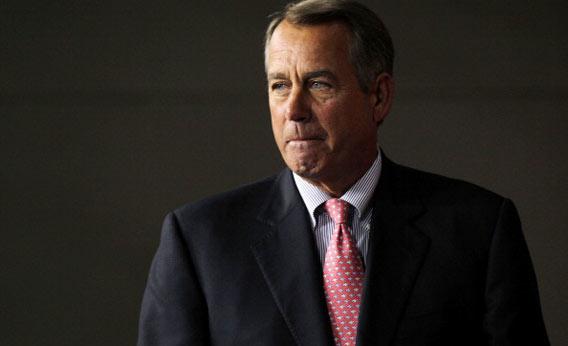On occasion when I feel like getting upset at someone, I scroll over to the website of the U.S. Treasury Department and check its Daily Real Yield Curve page. This vital economic resource is obscure to the average American, which is understandable, but also apparently unknown to the president of the United States and members of Congress of both parties. It says something, after all, that’s slightly shocking. As of Dec. 2, the inflation-adjusted interest rate financial markets are charging the federal government for a five-year loan is negative. For a seven-year loan? Negative. For a 10-year loan? Zero. In other words, investors are currently willing to lend the U.S. government money, and then in return get back less money (in inflation-adjusted returns) five or seven years later. At 10 years, we’d be repaying exactly what we put in.
Consider this as you look at the congressional fight about how to pay for an extension of temporary payroll tax cuts that both parties in principle agree should be extended.
Republicans want to pay for the extension with reductions in government spending, holding the short-term needs of the fragile labor market hostage to their larger ideological agenda. Democrats propose paying for the extensions with a temporary tax on incomes of over $1 million, hoping the GOP will object and thus permit the president to castigate his opponents as taxing the middle class to benefit millionaires. Democrats on the Hill and in the administration have conveyed to me confidence that they’re “winning” this battle of the blinkered versus the cynical, but the real question is why we’re playing at all.
Return to the Daily Real Yield Curve data. These are interest rates. The idea of interest rates, in general, is that if you are borrowing, you want to pay a low one.
People take out mortgages, for example, rather than buying houses with credit cards. When mortgage rates fall, there’s a rush to refinance. Cheap money is better than expensive money. But what you never get is an offer of free money. The idea, always, is that someone will give you some money today and in exchange you have to give him back more money later on. Unless, that is, you’re the government of the United States of America, and lenders are willing to pay for the privilege of lending you money.
Why are investors so willing to do this? Maybe they’ve gone mad. More likely, they’re nervous. The weak global growth outlook, the erratic behavior of the European Central Bank, and China’s severe curbs on capital inflows have created enormous demand for the world’s few remaining safe and highly liquid financial assets. These are the kind of assets that can be used as collateral in financial transactions, that you can be confident there will always be a buyer for if you need to sell in a rush, and whose properties are well-understood and don’t require detailed analysis. American government debt fits the bill, so we’re currently able to issue it at amazingly low prices. Unique attributes of American debt plus the depressed state of the economy mean that the government can borrow funds at negative cost.
That’s what makes the debate over how to offset the fiscal impact of a payroll tax extension so maddening. Taxes are the principal way of paying for military expenditures and public services because under normal circumstances it’s much cheaper to pay for the things you’re buying than to borrow money. But under today’s interest rate conditions, it’s more expensive to pay the bills out of taxes than to just borrow the money, because borrowing is so cheap. Stimulus is far more economically rational that either tax hikes or spending cuts.
Both the Democratic proposal and the Republican alternative are inferior to simply agreeing to disagree and fighting this out a few years down the road.
Instead we’re watching the unfortunate consequences of a years-long phony debate over fiscal stimulus. Neither party genuinely denies that under certain circumstances a larger budget deficit can boost the economy. That’s why George W. Bush initiated stimulus measures in 2001 and 2008 and why three years ago this month Mitt Romney was writing pieces for National Review outlining his version of a stimulus package to respond to the growing downturn. But now neither party will admit to believing any such thing, even though with interest rates tumbling the case on the merits for debt finance has never been stronger.
Much political rhetoric simply identifies low deficits with “responsible” behavior. But politicians’ real responsibility is to make smart economic policy choices. People disagree, and will continue to disagree, about the appropriate long-term size of federal spending. But to pay for it by taxing productive labor when it’s cheaper to simply borrow and let our richer future selves repay a smaller sum is absurd.
